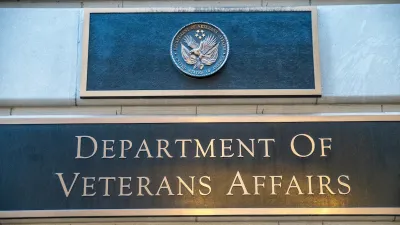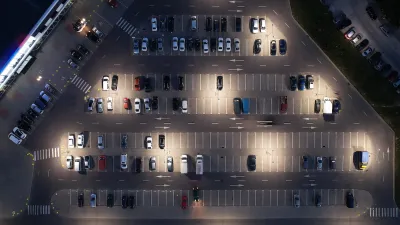It should come as no surprise to anyone who has visited Downtown L.A.'s Skid Row that the city has a serious homelessness problem -- with more people living on the street than any other city in the nation. A recent article in the Economist focused on the recent crackdown by the city's police on the homeless population of skid row. With more and more residents moving into the area, and city officials keen to clean up downtown's streets, police chief William Bratton committed additional police officers to patrol the area to round up criminals (and presumably break up the population of street dwellers).
It should come as no surprise to anyone who has visited Downtown L.A.'s Skid Row that the city has a serious homelessness problem -- with more people living on the street than any other city in the nation. A recent article in the Economist focused on the recent crackdown by the city's police on the homeless population of skid row. With more and more residents moving into the area, and city officials keen to clean up downtown's streets, police chief William Bratton committed additional police officers to patrol the area to round up criminals (and presumably break up the population of street dwellers).
The renewed effort has indeed produced a decline in the number of people sleeping in tents. But as the article points out, most of Skid Row's former residents have just moved to other parts of the city. Predictably, residents and businesses in the newly effected communities aren't happy about the influx of homeless people in their neighborhoods.
Meanwhile, there is little talk (and even less action) of actually dealing with the problem of homelessness -- by providing needed housing (and then in turn, services to get people on their feet). Clearly this is a difficult and expensive thing to do, but as other cities have learned (and the Economist article points out), the cost of the status quo -- in terms of emergency room visits, jail stays, and lost economic opportunity -- are equal to (if not larger than) the cost of providing affordable housing.
Of course, even if you got everyone onboard with the idea of actually building housing for the homeless, then you face the problem of where to site it. Pretty much every community that is approached with a proposal for supportive housing feels like its "getting dumped on", and complains to politicians to take it someplace else (hint to politicians: offer the community something in return -- like a new community center or library on the ground floor).
The whole story also got me thinking about where homeless people congregate,, and why. In Skid Row's case, it's clear the area was actually targeted by public policy to be a home to the homeless -- with numerous shelters and service centers built in the vicinity to manage the population (urban gentrification was not on the horizon when this decision was made). Nowadays, most people think this was a bad idea -- though some advocates still believe that it's the best way to deal with delivering services to a large number of people.
Other areas, like Santa Monica and Westwood, seem to attract a fair number of homeless persons due to a greater level of tolerance (which has steadily declining), and what one might assume as a decent market for collecting handouts (i.e. lots of foot traffic).
Interestingly, in my former Koreatown neighborhood (only a short bus ride from downtown), I don't think I ever saw a homeless person. The community isn't heavily policed, so I wonder if the reason for the lack of homeless is that the Latin American and Asian immigrants who live there aren't very generous with their handouts.

Alabama: Trump Terminates Settlements for Black Communities Harmed By Raw Sewage
Trump deemed the landmark civil rights agreement “illegal DEI and environmental justice policy.”

Planetizen Federal Action Tracker
A weekly monitor of how Trump’s orders and actions are impacting planners and planning in America.

The 120 Year Old Tiny Home Villages That Sheltered San Francisco’s Earthquake Refugees
More than a century ago, San Francisco mobilized to house thousands of residents displaced by the 1906 earthquake. Could their strategy offer a model for the present?

Ken Jennings Launches Transit Web Series
The Jeopardy champ wants you to ride public transit.

BLM To Rescind Public Lands Rule
The change will downgrade conservation, once again putting federal land at risk for mining and other extractive uses.

Indy Neighborhood Group Builds Temporary Multi-Use Path
Community members, aided in part by funding from the city, repurposed a vehicle lane to create a protected bike and pedestrian path for the summer season.
Urban Design for Planners 1: Software Tools
This six-course series explores essential urban design concepts using open source software and equips planners with the tools they need to participate fully in the urban design process.
Planning for Universal Design
Learn the tools for implementing Universal Design in planning regulations.
Clanton & Associates, Inc.
Jessamine County Fiscal Court
Institute for Housing and Urban Development Studies (IHS)
City of Grandview
Harvard GSD Executive Education
Toledo-Lucas County Plan Commissions
Salt Lake City
NYU Wagner Graduate School of Public Service






























